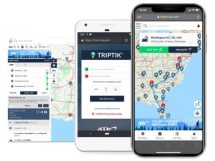This article was produced by the Kentucky Center for Investigative Reporting, a nonprofit newsroom based in Louisville, Ky.
Louisville, Ky. – Already home to one of the most underfunded public pension plans in the nation, Kentucky Retirement Systems is losing further ground through its investment choices.
The retirement plan for state, city and county workers and retirees in Kentucky posted a puny 2 percent return on the $11.5 billion pension portion of its overall investment portfolio in the fiscal year that ended June 30. That compared to a 7.4 percent return for the Standard & Poor’s 500 index of large U.S. stocks. Even 10-year Treasury notes are yielding 2 percent.
Perhaps more eye-opening, though, the KRS return was much lower than that of the three pension plans for Kentucky teachers, legislators and judges, according to a recent report from the state’s Legislative Research Commission. The Kentucky Teachers’ Retirement System, larger at $17.9 billion, posted a 5 percent return on its investments in fiscal 2015. The much-smaller pension plans for legislators and judges had annual returns of about 10 percent.
No two pension plans have identical investment portfolios. KRS is heavily exposed to so-called “alternative” investments, such as hedge funds and private equity funds, that have higher fees. Alternatives make up roughly 35 percent of KRS’ portfolio, compared with 12 percent at KTRS. The legislative and judicial pension plans don’t invest in alternatives at all.
The performance gaps between the Kentucky retirement funds are manifested over longer periods, too. Over five years, KRS had an average annual return of 9.2 percent, versus about 12 percent at KTRS and nearly 15 percent at the legislative and judicial funds. Over a 10-year span, which covered the bear market of 2008-09, KRS netted an average of 6.1 percent a year, compared with nearly 7 percent at KTRS and nearly 8 percent at the other two.
The LRC report included fees in KRS’ returns, but not for the three other funds. The Kentucky Center for Investigative Reporting reviewed expenses ratios at those funds and accounted for them in the comparisons above.
Bill Thielen, KRS’ executive director since 2011, said the comparisons are a rather pointless exercise.
“Comparing pension plans is extremely difficult because every one is very different,” he said. “You have different maturities, different cash flow issues, different funding — different funded status — so it’s very difficult to compare apples to apples.
“We’re really not in competition with other pension plans,” he added. “What we need to do is to at least make our assumed rate of return on investments, which is necessary to meet our liability stream.”
But that made for another poor comparison in fiscal 2015. KRS had an assumed rate of return of 7.75 percent in that 12-month period, so its actual return was almost 6 percent short of the goal.
Some changes in investment strategy are afoot. Right now, hedge funds — managed baskets of securities intended to beat average market returns — compose about 11 percent of KRS’ pension assets. About 89 percent of that $1.2 billion lies in so-called “funds of funds” — hedge funds that invest in other hedge funds. Chief Investment Officer David Peden said that should fall to 50 percent next year.
One thing that won’t happen is a complete evacuation from alternative investments toward the kind of heavy U.S. stock market reliance shown by the pension funds for teachers, legislators and judges.
“We couldn’t afford, from a risk standpoint, to have nearly that amount of assets in U.S. equities,” Thielen said. “We’ve got to balance our risk against the need for returns.”
KRS’ underwhelming investment performance is drawing attention in many quarters, among them state Sen. Joe Bowen, R-Owensboro. Bowen, co-chairman of the state Public Pension Oversight Board, wonders why KRS doesn’t invest as well as other pension systems.
“They’ve been in the wrong thing at the wrong time,” he said. “They’ve been in foreign investments when we should have been in American companies. It’s just been that kind of situation. There’s been some question as to their asset allocation.”
Russell Wright, a 63-year-old retired state worker who lives in Frankfort, worries about the solvency of the state retirement system. His particular pension plan within KRS — KERS nonhazardous — had only enough money to cover 21 percent of its payout obligations, at last count. He thinks KRS’ reliance on alternatives should be helpful during market downturns like that of the past two months.
“I suppose time will tell,” Wright said. “However, returns over the last several years could lead one to question this strategy.”
More than 348,000 state, city and county employees and retirees have benefits in KRS.






Add Comment